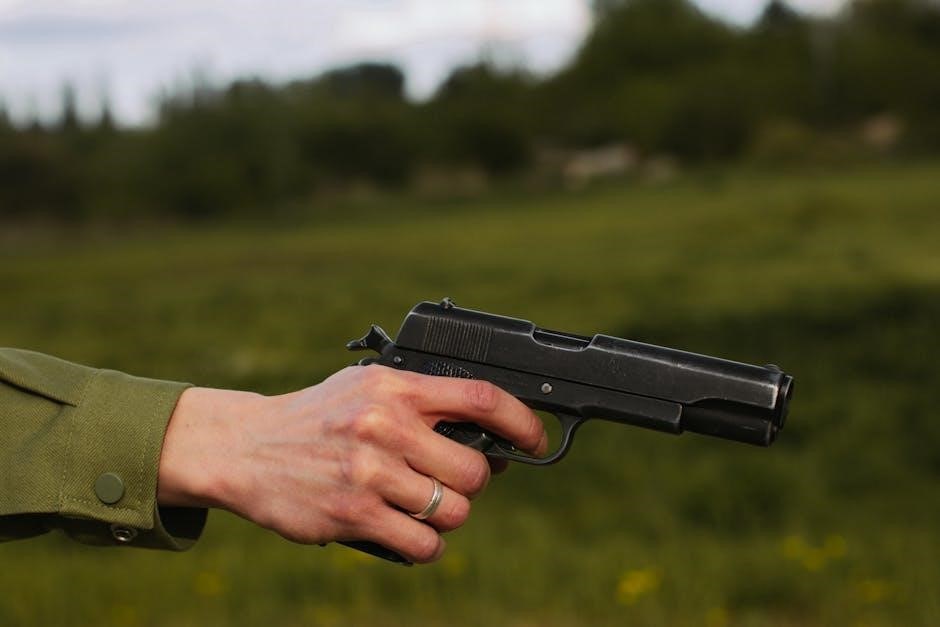Striker-fired pistols with manual safety combine modern functionality with traditional control, offering a balance between ease of use and added security for users.
1;1. Definition and Basic Functionality
A striker-fired pistol with a manual safety is a firearm that uses a striker mechanism to ignite the cartridge, combined with a manual safety lever for added control. Unlike hammer-fired pistols, striker-fired designs eliminate the external hammer, providing a sleeker profile. The manual safety, typically located on the frame, allows the user to engage or disengage the safety mechanism manually, offering an extra layer of security. This design caters to users who prefer the reassurance of a physical safety, while the striker system ensures reliable ignition. The integration of both features balances modern functionality with traditional control, appealing to a wide range of shooters.
1.2. Historical Context and Evolution
The striker-fired pistol with manual safety traces its origins to the late 19th and early 20th centuries, evolving from earlier semi-automatic designs. Early striker systems were pioneered by inventors like Ferdinand Ritter von Mannlicher and Carl Ehbets, who sought to eliminate the external hammer for a sleeker profile. The integration of a manual safety lever emerged as a response to safety concerns, particularly in military and law enforcement contexts. Over time, advancements in materials and ergonomics refined the design, making striker-fired pistols with manual safety more reliable and user-friendly. By the mid-20th century, models like the Colt 1900 incorporated manual safeties, setting a precedent for modern designs. This historical progression laid the groundwork for the versatile, safe, and efficient firearms seen today.
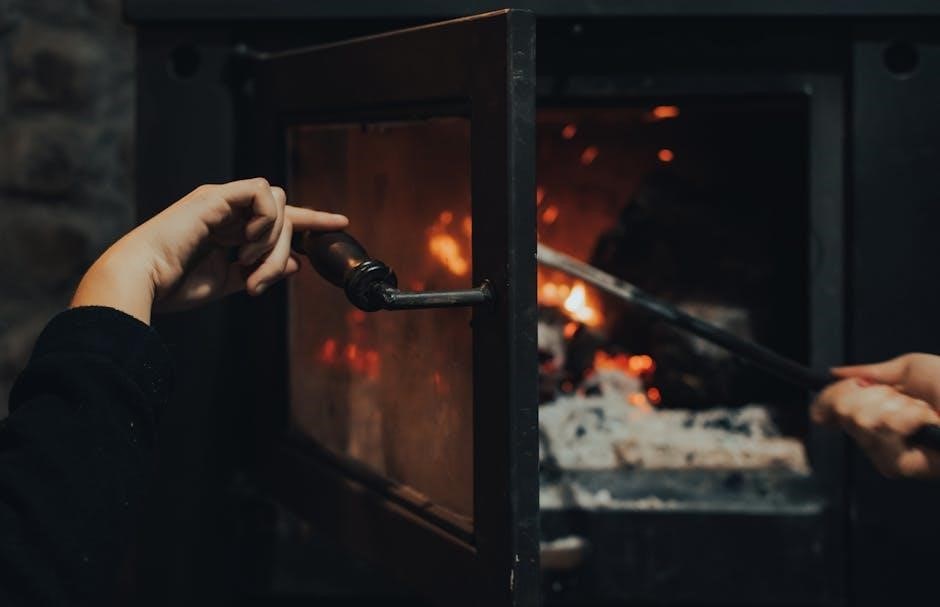
Key Characteristics of Striker-Fired Pistols
Striker-fired pistols with manual safety feature a striker-fired mechanism, manual safety lever, smooth trigger pull, and slim design. They prioritize reliability, ease of use, and maintenance.
2.1. Mechanism of Operation
Striker-fired pistols with manual safety operate by using a striker, a spring-driven component, to ignite the primer. The trigger pull partially cocks the striker, and a full pull releases it to strike the cartridge. The manual safety, when engaged, physically blocks the trigger or striker, preventing accidental discharge. These pistols often feature a safe-action or double-action-only system, ensuring the striker is only fully cocked during intentional firing. The design eliminates the need for a hammer, streamlining the firearm and reducing potential snagging. This mechanism provides a consistent trigger pull and enhances reliability, making striker-fired pistols with manual safety a popular choice for self-defense and duty use.
2.2. Advantages Over Hammer-Fired Pistols
Striker-fired pistols with manual safety offer several advantages over hammer-fired designs. The absence of an external hammer reduces snagging on clothing or holsters, making them ideal for concealed carry. Their sleeker profile also enhances aesthetics and modern design appeal. Additionally, striker-fired systems often provide a smoother and more consistent trigger pull, which can improve accuracy and control for shooters. The elimination of the hammer reduces the number of moving parts, slightly lowering overall weight and enhancing reliability. Furthermore, the manual safety adds an extra layer of security, allowing users to engage or disengage the mechanism as needed. These factors contribute to their popularity in both civilian and professional contexts.
2.3. Popularity in Modern Firearms
Striker-fired pistols with manual safety have gained significant popularity in modern firearms, particularly among law enforcement, concealed carriers, and recreational shooters. Their sleek, streamlined design and reliability make them a preferred choice for self-defense and duty use. The manual safety feature provides an added layer of security, appealing to users who prioritize safe handling. Additionally, the simplicity of striker-fired mechanisms reduces maintenance and enhances durability. Major manufacturers like Glock, Smith & Wesson, and SIG Sauer offer models with optional manual safeties, catering to diverse user preferences. This versatility, combined with their proven performance, has solidified their place in the firearms market, making them a staple in both professional and civilian contexts.

The Role of Manual Safety in Striker-Fired Pistols
The manual safety in striker-fired pistols provides an additional layer of security, preventing accidental discharges. It offers users deliberate control, enhancing safety and confidence during handling.
3.1. Purpose and Function of Manual Safety
The manual safety on striker-fired pistols serves as an additional mechanical barrier to prevent accidental discharges. Its primary purpose is to block the trigger or firing mechanism, ensuring the pistol cannot fire unintentionally. By engaging the safety, users gain an extra layer of control, particularly in stressful situations or during holstering. This feature is especially valued by those who prefer an overt mechanism to enhance safety. The manual safety also provides a clear visual and tactile indicator of the pistol’s status, offering peace of mind. While not a replacement for proper trigger discipline, it acts as a supplementary measure to prevent negligent discharges. Proper training is essential to use the safety effectively.
3.2. Design Variations of Manual Safety Levers
Manual safety levers on striker-fired pistols vary in design to accommodate different user preferences and operational needs. Some pistols feature a frame-mounted safety, typically located on the left side, while others incorporate a slide-mounted design for easier access. The size and shape of the lever can differ, with some being more pronounced for intuitive engagement and others designed to be low-profile to avoid snagging during drawing. Texturing and ergonomic contours are common to ensure positive manipulation. Certain models, like the Smith & Wesson M&P, offer ambidextrous safeties, while others, such as the SIG Sauer P320, provide reversible levers for left-handed shooters. This diversity allows users to choose a pistol that aligns with their shooting style and ergonomic preferences, enhancing both safety and functionality. Additionally, some manufacturers incorporate safety levers with integrated features, such as decocking or trigger-blocking mechanisms, to further enhance control. These design variations underscore the importance of manual safety in adapting to individual needs while maintaining reliability and ease of use.
3.3. User Preferences and Controversies
The inclusion of a manual safety on striker-fired pistols sparks debate among users, with preferences often tied to personal experience and shooting styles. Some shooters value the added layer of security a manual safety provides, particularly for concealed carry or duty use, where accidental discharges are a critical concern. Others argue that modern striker-fired pistols with passive safeties, such as trigger safeties, are sufficiently secure without the need for a manual lever. Controversies also arise regarding the potential for training issues, as reliance on the manual safety can lead to unintentional disengagement or failure to disengage during stress. Additionally, the ergonomic placement and ease of manipulation of the safety lever can significantly influence user satisfaction. This divide highlights the importance of aligning firearm features with individual preferences and operational requirements.

Safety Considerations and Best Practices
Safe handling practices, proper storage, and adherence to manufacturer guidelines are critical for striker-fired pistols with manual safety. Always maintain situational awareness and follow safety protocols.
4.1. Proper Handling and Storage
Proper handling and storage of striker-fired pistols with manual safety are essential for ensuring safety and preventing accidents. Always keep your finger off the trigger until ready to shoot, and engage the manual safety when not in use. Store the pistol unloaded in a secure location, such as a gun safe or lockbox, to prevent unauthorized access. Use a holster with retention features when carrying, and ensure the pistol is positioned to avoid accidental discharge. Regularly inspect the firearm for damage or wear, and follow manufacturer guidelines for maintenance. Store ammunition separately from the firearm, and always supervise handling by inexperienced users. Proper storage and handling practices help mitigate risks and ensure responsible ownership.
4.2. Holstering and Unholstering Techniques
Proper holstering and unholstering techniques are critical for safe handling of striker-fired pistols with manual safety. Always ensure the pistol is pointed in a safe direction during these processes. When holstering, keep your finger off the trigger and use your thumb to guide the pistol into the holster. For unholstering, maintain control of the pistol, ensuring your finger remains outside the trigger guard until ready to shoot. Use a high-quality holster that fits your pistol securely to prevent accidental discharge. Practice these techniques regularly to build muscle memory and confidence. Always be mindful of your surroundings and avoid unnecessary movements that could lead to mishaps. Safe holstering and unholstering habits are essential for responsible firearm ownership.
4.3. Trigger Discipline and Awareness
Trigger discipline is a cornerstone of safe firearm handling, especially with striker-fired pistols equipped with manual safety. Always keep your finger off the trigger and outside the trigger guard until you are ready to shoot. This prevents accidental discharges, which can occur even with the safety engaged. Awareness of your surroundings is equally important to ensure the pistol is pointed in a safe direction at all times. Practice proper trigger control during training and dry firing exercises to build habit. Regularly review safety protocols and stay focused to avoid distractions. Trigger discipline and situational awareness are critical for responsible ownership and operation of striker-fired pistols with manual safety mechanisms.
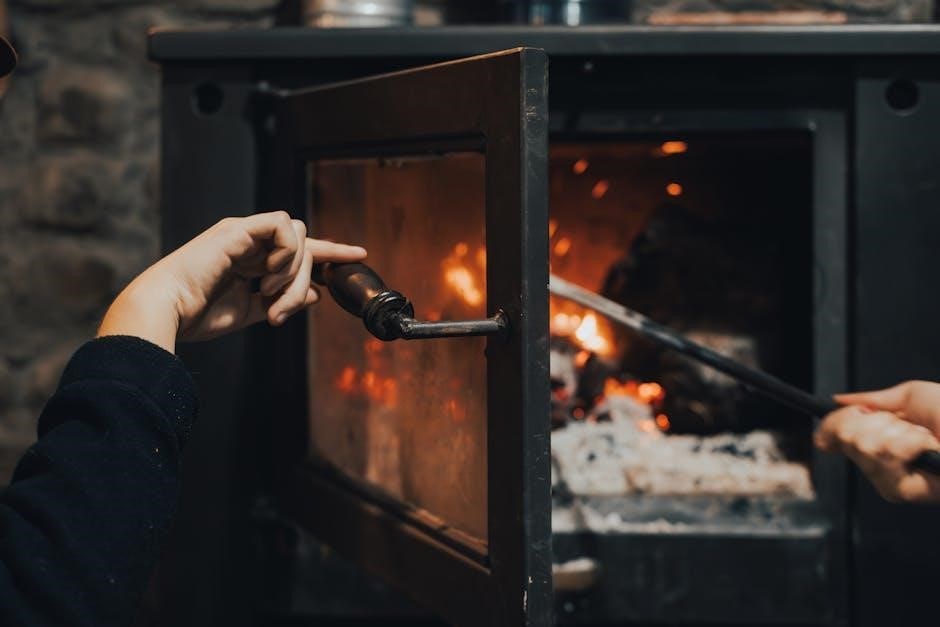
Comparing Striker-Fired Pistols with and Without Manual Safety
Striker-fired pistols with and without manual safety differ in design and functionality, balancing security, simplicity, and user preference, impacting concealed carry and operational control.
5.1. Pros and Cons of Manual Safety
The inclusion of a manual safety in striker-fired pistols offers enhanced security by preventing accidental discharges, especially during holstering or handling. It provides an additional layer of control, appealing to users who prioritize safety. However, critics argue that manual safeties can complicate the draw process, potentially hindering quick access in high-stress situations. Some shooters find the lever cumbersome or prone to accidental engagement or disengagement. Additionally, the manual safety adds complexity to the pistol’s design, which may increase maintenance needs. Despite these trade-offs, many users appreciate the peace of mind it offers, making it a matter of personal preference and intended use.
5.2. Impact on Concealed Carry and Everyday Use
Striker-fired pistols with manual safety can significantly impact concealed carry and daily use. Proponents argue that the manual safety provides an additional layer of security, reducing the risk of accidental discharge during holstering or unintended movement. This can be particularly beneficial for new shooters or those prioritizing safety above all else. However, critics point out that the safety lever may inadvertently engage or disengage during the draw, potentially causing delays in critical situations. Additionally, the presence of a manual safety may require specific holster designs, adding complexity to everyday carry setups. Ultimately, the practicality of a manual safety in concealed carry depends on the user’s comfort, training, and specific needs.
5.3. Performance in Competitive Shooting Sports
Striker-fired pistols with manual safety can perform well in competitive shooting sports, though their effectiveness depends on the shooter’s adaptability. The manual safety may introduce an extra step in the shooting process, potentially slowing down split times for competitors who are accustomed to faster, safety-free designs. However, the reliability and consistent trigger reset of striker-fired pistols often offset this drawback. For shooters who prioritize precision and control, the manual safety can provide an added layer of confidence, especially during rapid reloads or holstering. Some competitors find that the tactile feedback of the safety enhances their focus, while others prefer the simplicity of pistols without manual safeties for quicker engagement.

Popular Models of Striker-Fired Pistols with Manual Safety
Popular models include the Smith & Wesson M&P with manual safety, known for its reliability and ergonomic design, and the SIG Sauer P320, offering modular options and enhanced safety features. Other notable brands like Glock and FN also provide variants with manual safeties, catering to various shooter preferences and needs.
6.1. Smith & Wesson M&P with Manual Safety
The Smith & Wesson M&P (Military and Police) series is a highly regarded striker-fired pistol with a manual safety option. Known for its reliability and versatility, the M&P is widely used by law enforcement and civilians alike. Designed with an ergonomic grip and interchangeable palm swell inserts, it offers a customizable fit for various hand sizes. The manual safety lever, located on the left side, provides an additional layer of control for users who prefer an external safety mechanism. Available in multiple calibers, including 9mm and .40 S&W, the M&P with manual safety is a popular choice for duty and concealed carry. Its durability, smooth trigger pull, and ambidextrous safety make it a top contender in the market.
6.2. SIG Sauer P320 and P365 with Safety Options
SIG Sauer’s P320 and P365 are renowned striker-fired pistols that offer optional manual safety features. The P320, a modular platform, allows users to switch calibers and frame sizes easily, making it highly versatile. The P365, known as a compact concealed-carry pistol, features a slim design and excellent ergonomics. Both models are available with manual safety levers, providing an additional layer of control for users who prefer it. These pistols are celebrated for their smooth triggers, reliability, and durability. SIG Sauer’s reputation for innovation and quality ensures these firearms meet high performance standards, making them popular among law enforcement and civilian shooters alike. Their optional safety mechanisms cater to diverse user preferences while maintaining operational excellence.
6.3. Other Notable Brands and Models
Beyond Smith & Wesson and SIG Sauer, other brands offer striker-fired pistols with manual safety options. CZ USA’s SP-01 and P-10 models are highly regarded for their ergonomics and reliability, with optional manual safeties. FN America’s FNX and 509 series also feature striker-fired mechanisms with manual safety levers, catering to both civilian and professional users. Glock, while primarily known for its no-manual-safety designs, offers the 43x with an optional factory-installed safety. Walther’s PPQ and PDP series provide sleek designs with optional manual safeties, combining excellent triggers with robust safety features. These models highlight the diversity and innovation in the market, offering shooters a wide range of choices tailored to their preferences and needs.
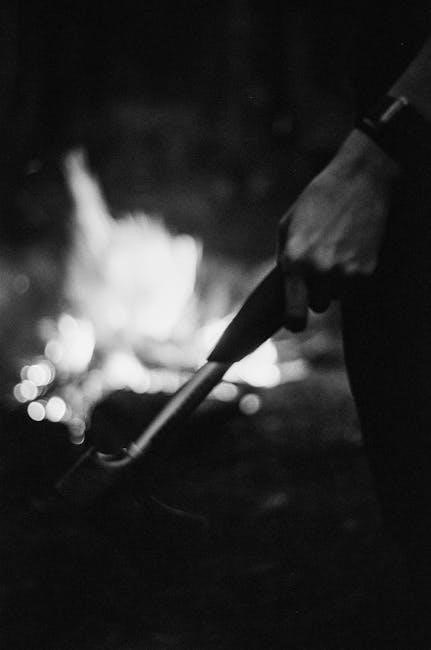
Maintenance and Upkeep
Regular cleaning of the striker channel and lubrication of moving parts are essential for reliability. Inspect the manual safety lever and firing pin for proper function and wear. Avoid harsh chemicals that could damage finishes or components. Light oil on contact points ensures smooth operation. Schedule professional maintenance every 500 rounds to prevent wear-induced malfunctions. Always follow manufacturer guidelines to extend the pistol’s lifespan and ensure optimal performance.
7.1. Cleaning and Lubrication
Cleaning and lubrication are critical for maintaining the reliability and performance of striker-fired pistols with manual safety. Begin by field-stripping the pistol to access the barrel, striker, and slide. Use a soft brush and mild solvent to remove residue from the striker channel, barrel, and breech face. Pay special attention to the trigger mechanism and safety lever, ensuring no debris interferes with their function. Apply a high-quality gun oil to moving parts, such as the striker, trigger, and slide rails. Avoid over-lubrication, as excess oil can attract dust and impede operation. Regular cleaning prevents corrosion and ensures smooth cycling, while proper lubrication reduces wear and enhances reliability.
7.2. Inspection of Safety Mechanisms
Regular inspection of the manual safety mechanism on striker-fired pistols is crucial for ensuring safe and reliable operation. Owners should examine the safety lever for smooth operation and proper engagement, checking for any signs of wear, damage, or corrosion. Internal components connected to the safety, such as the sear and trigger mechanism, should also be visually inspected for debris, excessive wear, or misalignment. Testing the safety by engaging and disengaging it multiple times can help verify its functionality. Any issues, such as a loose or jammed safety lever, should be addressed promptly, either through cleaning or professional maintenance. Regular inspection helps prevent accidental discharges and maintains the pistol’s reliability and performance over time.
7.3. Warranty and Manufacturer Recommendations
Adhering to manufacturer recommendations is essential for maintaining the reliability and performance of striker-fired pistols with manual safety. Most manufacturers provide a warranty period, typically ranging from 1 to 5 years, depending on the brand and model. To ensure warranty validity, users must follow specified maintenance routines and avoid unauthorized modifications. Manufacturers often recommend using factory-approved parts and accessories to maintain safety and functionality. Regular cleaning, lubrication, and inspection, as outlined in the owner’s manual, are crucial for prolonging the pistol’s service life. Additionally, users should familiarize themselves with the manufacturer’s guidelines for storage and transportation to avoid voiding the warranty. Always consult the owner’s manual for specific instructions tailored to your firearm.

Training and Familiarization
Proper training and familiarization with striker-fired pistols are crucial for safe and effective use, ensuring users understand manual safety operation and handling procedures.
8.1. Importance of Proper Training
Proper training is essential for safe and effective use of striker-fired pistols with manual safety. It ensures users understand the firearm’s mechanics, handling, and safety features. Training builds confidence, proficiency, and situational awareness, reducing accidental discharges. Understanding manual safety operation is critical to prevent unintended engagements. Instruction also covers legal responsibilities, storage, and transportation. Without training, users may overlook safety protocols, leading to potential hazards. Comprehensive training programs emphasize trigger discipline, holstering techniques, and emergency procedures. Regular practice reinforces muscle memory and decision-making skills. Proper training fosters a culture of safety and responsibility, making users more competent and aware. It is the cornerstone of responsible firearm ownership and use.
8.2. Drills for Safe Handling
Drills for safe handling of striker-fired pistols with manual safety are designed to reinforce proper techniques and situational awareness. Dry firing exercises help users familiarize themselves with the trigger system without live ammunition. Reload drills under time pressure simulate real-world scenarios, improving speed and accuracy. Target transitions and precision shooting drills enhance control and accuracy. Malfunction drills teach users to clear stoppages safely and efficiently. Slow and deliberate shooting exercises emphasize trigger discipline and muzzle awareness. Holstering and drawing drills, with a focus on safety, ensure users can securely handle the firearm in various situations. These drills build muscle memory, confidence, and a strong foundation for responsible firearm use.
8.3. Overcoming Common Misconceptions
Common misconceptions about striker-fired pistols with manual safety often stem from a lack of understanding or improper training. One misconception is that the manual safety is unnecessary, as the trigger safety is sufficient. However, the manual safety provides an additional layer of security, especially during holstering or handling in stressful situations. Another myth is that the safety complicates or slows down the draw process, but proper training ensures it becomes second nature. Some believe striker-fired pistols are less reliable than hammer-fired ones, but modern designs have proven their reliability. Addressing these misconceptions through education and hands-on practice helps users maximize the pistol’s potential while maintaining safety and confidence.
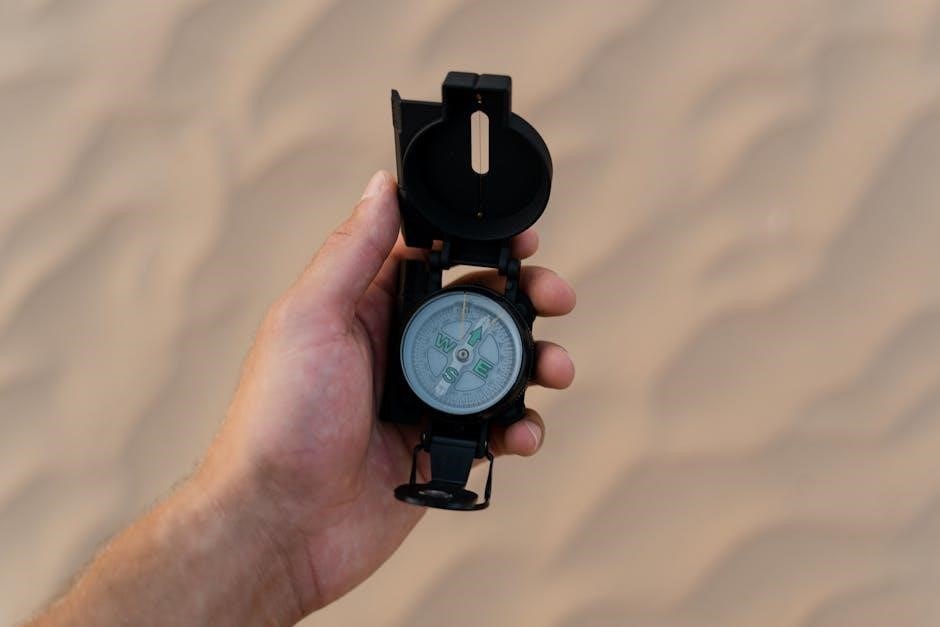
Legal and Regulatory Considerations
Legal and regulatory considerations for striker-fired pistols with manual safety involve compliance with local and federal laws, storage regulations, and transportation requirements to ensure responsible ownership and use.
9.1. Compliance with Local and Federal Laws
Compliance with local and federal laws is crucial when owning or carrying striker-fired pistols with manual safety. Federal regulations, such as the Gun Control Act of 1968, dictate who can legally purchase firearms, including age restrictions and background checks. Additionally, state laws may impose further requirements, such as permits for concealed carry or mandatory waiting periods. Owners must ensure their pistol meets specific criteria, such as barrel length and magazine capacity, to avoid violating federal or state statutes. Failure to comply can result in legal consequences, emphasizing the importance of understanding and adhering to all applicable laws.
Local ordinances may also affect how these pistols are stored, transported, or carried. Always verify legal requirements before purchasing or carrying a striker-fired pistol with manual safety to ensure full compliance and avoid legal issues.
9.2. Liability and Responsibility
Liability and responsibility are critical considerations for owners of striker-fired pistols with manual safety. Legal repercussions can arise if the firearm is mishandled or used negligently, leading to accidental discharge or harm to others. Owners must adhere to safety protocols and proper training to minimize risks; Negligent use can result in lawsuits or criminal charges, emphasizing the importance of responsible ownership.
The manual safety feature reduces accidental discharge risks but does not absolve the user of liability. Proper storage and secure handling are essential to prevent unauthorized access. Understanding these responsibilities ensures safe and lawful use of striker-fired pistols with manual safety.
9.3. Storage and Transportation Regulations
Proper storage and transportation of striker-fired pistols with manual safety are governed by local, state, and federal laws to ensure public safety and prevent unauthorized access. Firearms must be stored unloaded in a locked container or gun safe, inaccessible to children or unauthorized individuals. During transportation, pistols should be unloaded, secured in a locked case, and placed out of reach, often in a vehicle’s trunk or rear compartment. Compliance with these regulations minimizes legal risks and prevents accidental discharge. Always verify specific laws in your jurisdiction, as requirements can vary significantly. Responsible storage and transport are essential for legal compliance and community safety.
Striker-fired pistols with manual safety offer reliability and intentional design, making them popular for professionals and civilians. Their versatility in concealed carry, home defense, and sport shooting underscores their enduring appeal and practicality.
10.1. Final Thoughts on Striker-Fired Pistols with Manual Safety
Striker-fired pistols with manual safety strike an excellent balance between functionality and security, catering to both enthusiasts and professionals. Their design evolution reflects modern demands for reliability and ease of use. While debates about manual safety persist, these pistols remain a practical choice for those who value an added layer of control. Proper training and adherence to safety protocols are essential to maximize their benefits. As firearms technology advances, striker-fired pistols with manual safety will likely remain popular, offering a blend of tradition and innovation that meets diverse user needs and preferences.
10.2. Future Trends and Innovations
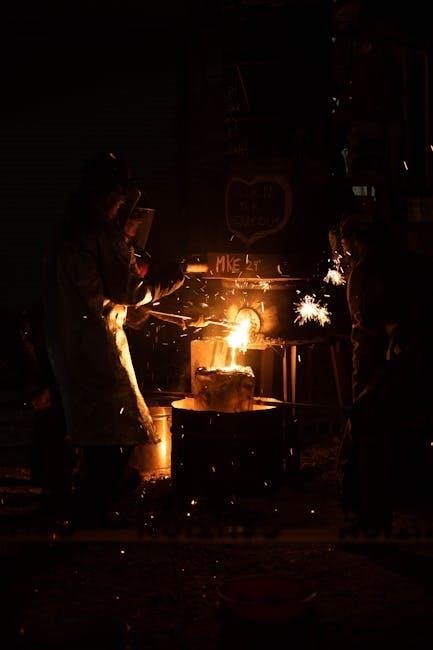
The future of striker-fired pistols with manual safety is poised for innovation, driven by advancements in materials and technology. Modularity will likely increase, allowing users to customize their pistols further. Lightweight materials, such as advanced polymers and aluminum alloys, will continue to enhance durability while reducing weight. Trigger systems may become even more refined, offering adjustable pull weights and reset distances. Safety mechanisms could integrate electronic or smart technology for enhanced security. Ergonomic designs will evolve to better fit diverse hand sizes and shooting styles. Additionally, manufacturers may focus on seamless integration with optics and accessories, catering to both tactical and competitive shooters. These trends aim to enhance usability, safety, and performance.
